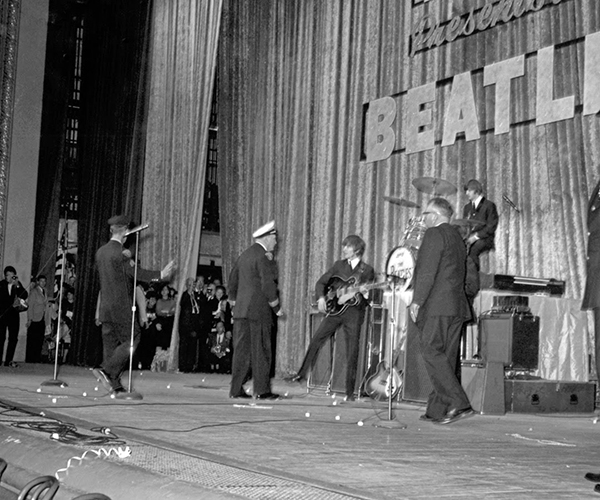It takes guts to snap photos this close to the sidelines. After working the 38 previous Super Bowls, veteran sports photographer Tony Tomsic ["Super (Bowl) Shooter," February 2005] knows how to avoid getting clocked. Capturing an emotional Bill Belichick on film? That's another story. "The time they scored the first touchdown, I was close up on his face," Tomsic recalls as he flips through a stack of his photos from Super Bowl XXXIX, which include a couple blank-faced shots of the New England Patriots' head coach. "There was just nothing. Nothing at all." Still, watching the former Browns coach calmly and expertly command his team is what Tomsic will remember most about this year's game. "I admire the guy, no matter what he did here," Tomsic says. "Watching his style and the way he runs that team, that's the fun part."
Three years ago, we wrote about an average summer for an extraordinary sixth-grader ("Evin's Summer," September 2002). At the time, her science and computer camps seemed impressive, but Evin McMullen trumped herself the following summer by co-founding Save Our Stream, a group dedicated to protecting the Ohio brook trout. Now, armed with $22,000 in grant money, she and some Hawken School classmates are hosting an April 17 event to repair riparian buffers. Want to help? Show up at The West Woods park in Russell Township at 1 p.m. with your trowel, gloves and boots. Yeah, we had to ask, too. According to McMullen, a riparian buffer is "the collection of grasses, shrubs and trees living along the edge of a stream's banks" that filters out pollutants and provides shade.
Lost: "The Thinking Man's Friend," Rick Gilmour. "Gilly" spent seven years behind the microphone of his WTAM-AM 1100 talk-radio show before vanishing from Clear Channel airwaves Dec. 5, 2004, with no explanation to fans of the long-running show.
Found: Gilmour re-emerged with a vengeance in late January, peppering local media with press releases explaining his disappearance (he was gradually phased off the air, then fired) and announcing his quest to find a new radio job so he can take on his former employer. "There's not much airtime in the town to go around," Gilmour concedes, noting it could take him several months to find a new job. "Don't worry about me," he adds. "I'm like the proverbial cat and I will land on my feet." What's Plan B if all else fails? "Maybe I'll run for mayor."
We're getting less sleep than the city known for never resting its eyes. At least that's what veteran pollster Bert Sperling (www.bestplaces.net) says after analyzing data culled from the Centers for Disease Control, the Bureau of Labor Statistics and the U.S. Census Bureau. His recent ranking of the worst cities for sleep has Cleveland No. 2 behind only Detroit. New York City finished No. 6, while Las Vegas (lucky No. 7) and Miami (No. 8) also made the Top 10. The cities getting their Zs: Minneapolis (No. 1); Washington, D.C. (No. 5); Chicago (No. 7); and Boston (No. 8). What separates the crashed from the cranky? The cities that sleep better are home to residents who report an overall higher level of personal happiness and have lower unemployment rates than their sleepless counterparts.
"I want to take a look at these athletes here. They are the 2010 Cleveland Indians. Where are the left-handed pitchers?" — Cleveland Indians president Paul Dolan, scouting future starters among Cleveland Municipal School District students present at a Feb. 15 press conference announcing a $250,000 gift from Cleveland Indians Charities to save the city schools' baseball and softball programs this season.
Attention, Earthlings: We've stripped 30 to 50 percent of the planet's surface and destroyed half of the world's rain forests. And before you say, "But I didn't chop down any trees," consider that the United States consumes 86 percent of the world's goods and services and produces 83 percent of all carbon dioxide emissions. Biologist Daniel Weiland's "What On Earth Are We Doing?" covers this and much, much more on how humans are hurting the planet, but the 233-page tome isn't all doom and gloom. The Lakewood resident caps the book by outlining 130 actions you can take locally to combat the damage to the environment. His advice — such as keeping silverware at work for your lunch, cutting back on dry cleaning, eschewing Styrofoam or eating vegetables and grains more often than meats — makes Weiland's last chapter alone required reading for all environmentally minded Americans. For more information, visit www.pdbookstore.com.



